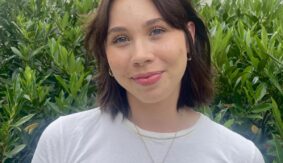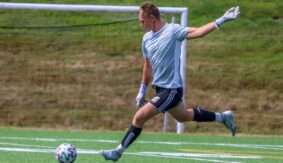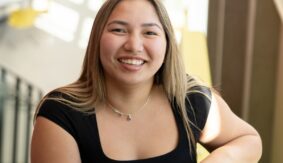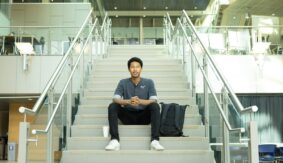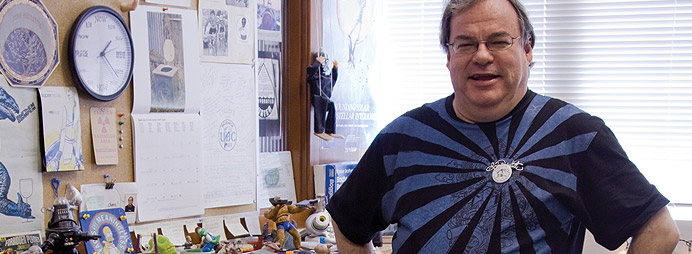
Designed and built at UBC by Dr. Jaymie Matthews, Canada’s first space telescope – MOST (Microvariability & Oscillations of Stars) – detects changes in the light of vibrating stars too subtle to be seen by even the largest telescopes on Earth.
“I like to think that I study the ‘body language’ of stars,” says Dr. Matthews. He says you can learn a lot about a person from how she moves and acts, just as you would a star. “If she’s cold or nervous, she might quiver, for example,” he says. “It turns out that many stars quiver as well, not because they’re cold, but because of sound waves bouncing around inside their gaseous interiors. If we can record the vibrations at the star’s surface, it tells us about what that star is like inside, and about its stage in life.”
You might expect a professor of Astronomy and Physics, recognized with two prestigious teaching awards, and who is an Officer of the Order of Canada, to be a rather intimidating sort of person. But around Jaymie Matthews it’s easy to feel at home. His office, filled with pop culture references from Star Wars to Ghostbusters, is a place where students can meet with him one on one. Like all UBC professors, Dr. Matthews schedules regular office hours in order to be available to his students.
He also has a few words of advice for high school students interested in becoming astronomers: “If you dream of becoming an astronomer and studying the Universe, don’t become discouraged. You could make a lot more money in another field with a lot less training, but nobody goes into astronomy for the money. It’s a passion. You can’t lose by following your dream, even if it doesn’t lead you where you expect when you start.
Dr. Matthews brings his ability to make complex scientific concepts relevant and his easygoing style to both the classroom and the lab, where many of his students are directly involved in his research.
